Really? You can do physiotherapy with a cat??
Cats are great little patients, it’s just a matter of working within their comfort zone, reading the behavioural signs and not petting the no-go zones. We’ve all see this picture right?
Mr Aries is a 6 years old Maine Coon with the longest tail I have ever seen attached to a cat. His picture above does not do his tail justice! Mr Aries found himself in need of a femoral head and neck excision (FHNE), a surgery to remove the head of the femur and create a false joint at the hip. In this case it was because of a fracture to the neck of the femur after a jumping incident. 5 weeks after surgery, Mr Aries was still not using his operated leg well and had some significant muscle wasting. Rehabilitation is super important after this type of surgery to gently stretch the muscles at the appropriate time and encourage full range of motion.
We made sure Mr Aries was pain free with medication, therapeutic laser and the owner applied an Assisi Loop three times daily. Mr Aries had already lost some weight, to return him to a normal body weight, which is really important in any musculoskeletal (bone/ joint/ muscle) problem.
But what Mr Aries needed was to have his back leg massaged and slowly stretching the muscles of the new, false hip joint, along with some weight bearing to encourage use. Mr Aries was not tending to agree, so we needed to create ways to ask him to put weight on his operated leg, now that he was comfortable, and to put his hip through normal movements and stretch.
We created active stretches by using treats, toys, laser lights at gradually increasing height and time; we added passive stretches during his sleep; we used gravity to help us to do passive stretches which didn’t require our touch. We introduced ‘dancing’ whilst supported, to encourage hip extension; while crawling under various objects promoted flexion. We used bum scratches and scrunchies to ask Mr Aries to put more of his body weight on his leg.
And it worked. With dedicated owners willing to commit to the home exercise programme, Mr Aries responded well and his owner updated me 3 weeks later to say: ‘He is doing way better. He is more active, similar to pre-incident. Active stretching is going super. He is already now stretching up with front paws on a ledge of 63cm, initially started at 50cm. Gravity stretches are also good. Passive stretching, well, he is still not too keen. Once I did it while he was sleeping, and that went extremely well. But it is always hit and miss... We'll keep on trying..... I'm holding his treat further to the right to entice weight shifting, but he is becoming very clever in changing his stance to cheat! Or cheeky and clawing my hand closer! The foot-shake-trick is coming along ok. So overall, he has improved much. I'm very impressed with his progress.’
Mr Aries was able to discontinue his pain medication shortly after, and has continued to improve to build up the muscle in his operated leg and has good function of both his back legs to ensure he can jump, climb, play and snooze just like before his hip injury.
相關產品
Assisi Loop®消炎儀器
HK$ 2880
This site is protected by reCAPTCHA and the Google Privacy Policy and Terms of Service apply.






